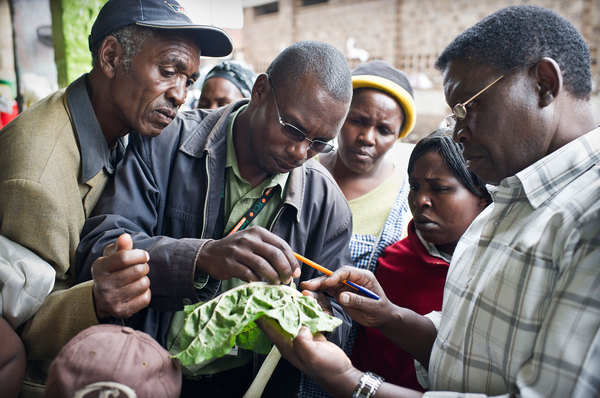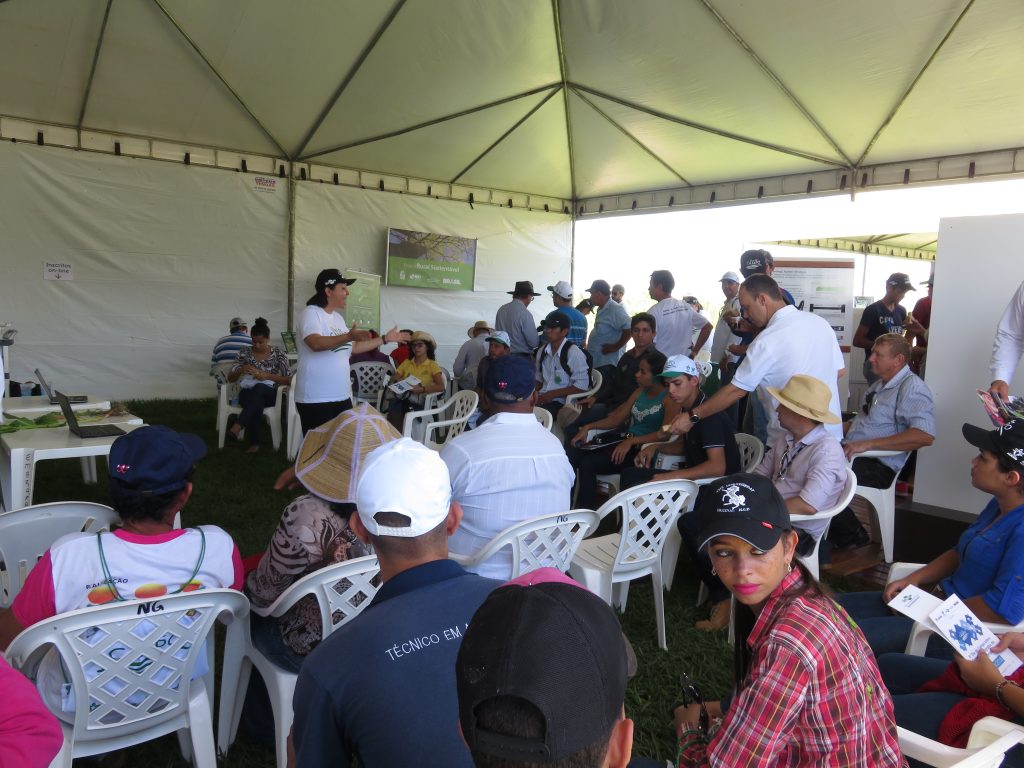Plantwise Brazilian team participates at EMBRAPA’s “6th Field Day on Integrated Systems for Agricultural Production”
Dr Yelitza Colmenarez and José Gómez represented the Plantwise programme in a field day organized by the Empresa Brasileira de Pesquisa Agropecuária (EMBRAPA: Brazilian Agricultural Research Corporation). EMBRAPA is an affiliated institution to the Ministry of Agriculture, devoted to the advancement of Brazilian agriculture through technology. The event was hosted by EMBRAPA’s agro-silviculture unit in Sinop,…
Capacitaciones para productores en idiomas nativos de Perú
Mediante los módulos de asistencia técnica (Clínica de plantas Plantwise), el Instituto de Innovación Agraria (INIA) capacitó a más de 30 productores, ganaderos y autoridades comunales de la provincia de Chucuito. La capacitación trató sobre el manejo integrado del gorgojo de los Andes, y la alimentación y cuidado del ganado entre otros. Es importante resaltar…
Tackling food security with urban agriculture
The world population is projected to increase by an additional one billion people by 2030 with Africa and Asia accounting for the greater share of this population growth. According to UN reports, more than half of the world’s population currently live in urban areas. By 2030, it is expected that more than 70 percent of the…
Collaboration between Plantwise and the University of Queensland
In 2014, Holly alerted our blog followers to the Plantwise factsheet library app, aimed to provide country extension workers with a portable electronic library of pest management factsheets. Since then, there have been in excess of 65,000 sessions of the app by our global users.
Perú: Las clínicas de plantas en los periódicos locales
En las últimas semanas, dos periódicos peruvianos, Andina y Correo, han publicado artículos acerca de las clínicas de plantas Plantwise impulsadas por el Instituto Nacional de Innovación Agraria (INIA) a través de la Unidad de Extensión Agraria de la Estación Experimental Agraria Santa Ana. En 2015, mediante la red de clínicas de plantas establecidas en…
Four new bee species described in Australia – many more remain unidentified
by Miroslav Djuric, DVM, CABI. Reblogged from CABI’s Hand Picked blog. Bee specialists from South Australia have described four new native bees. Three of these bee species have been described as having narrow faces and very long mouths, allowing them to feed on slender flowers found on the emu bush, a hardy native of the…
Tackling climate change and agriculture at COP21 – a look at the landscape approach
by Dr Trevor Nicholls, CEO, CABI At COP21 last week, the world’s leaders agreed on a way forward to manage climate change. Limiting global warming to less than two percent was undoubtedly a landmark decision and, for the first time, there was unanimous recognition that humans impact the climate and that humans must do something about…
Who owns open agricultural data?
This is an edited re-blog from an Open Data Institute (ODI) blog post published under Creative Commons BY-SA 2.0 UK license by Martin Parr, Head of Open Data at CABI. Follow Martin on Twitter. The Plantwise programme has developed a knowledge bank to share Good Agricultural Practice and a very high level of anonymised data about incidences of plant…
Open Data & Farming 101
by Ben Schaap, Tim Davies and Ana Brandusescu, GODAN What is open data? We all make decisions everyday based on different sources of information. Much of that information ultimately starts out as digital data. Open data is about changing the default, so that instead of being locked away for the benefit of a few, data…



